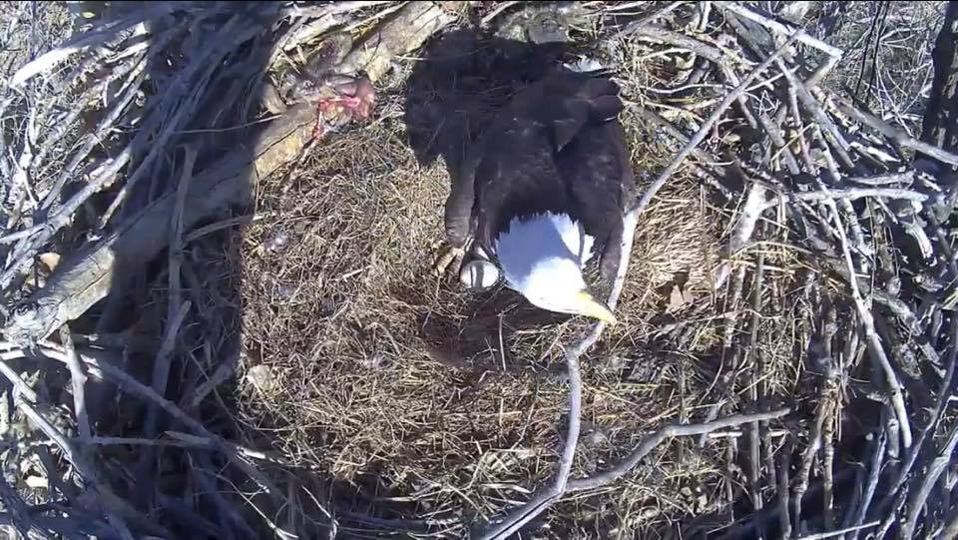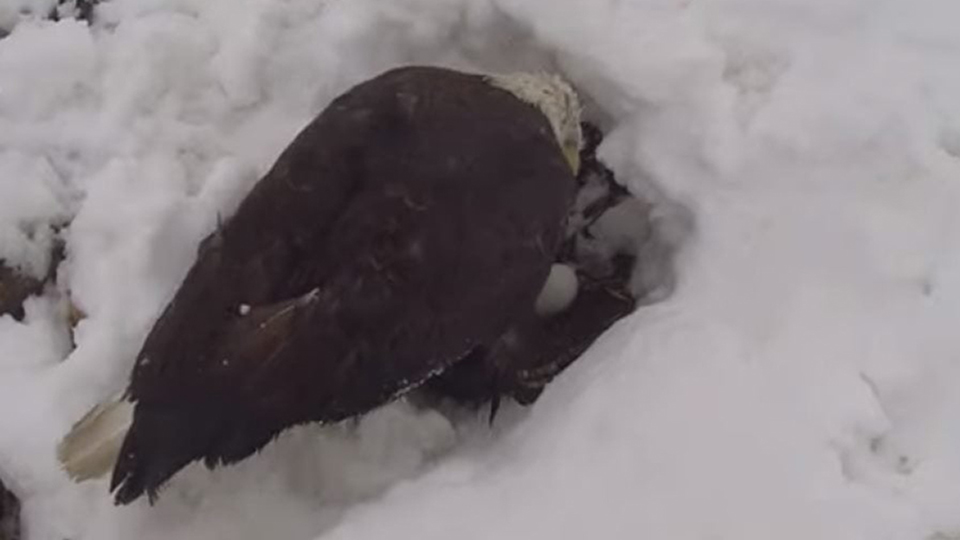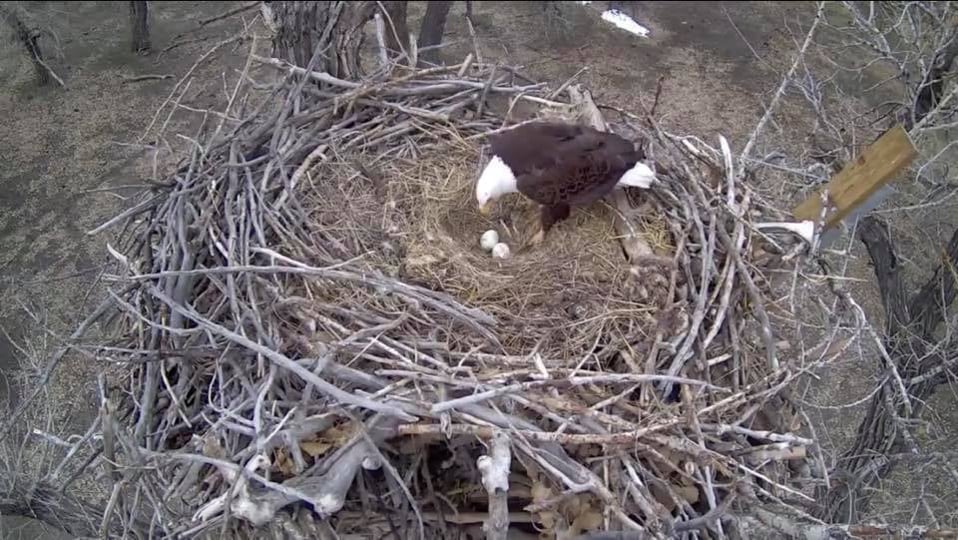– By Lanie (Elaine) Burritt
RRP placed a live cam at Xcel Energy’s Fort St. Vrain generating station near Platteville, Colorado way back in 2003. The huge nest (approximately 9 x 8 feet wide, eight feet high and 57 feet off the ground) is in a large cottonwood tree near the St. Vrain and Platte Rivers. We were surprised to learn in February that we have a new male when keen observers noticed that he was banded on his left leg instead of his right. This was opposite the previous male and unusual in general, since the federal band is normally placed on the right leg. As a newly mature adult and first time mate, the New Pa has to learn the ropes, but we are certain our experienced Ma will instruct him in all the do’s and don’ts of harmonious mate behavior by next season. It was funny to see him staring at his first egg, but he cautiously and slowly figured out how to get into position to incubate. New Pa has helped with nest building, bowl preparation, incubation (even during the heavy snowstorm), nest defense, and bringing food back to the nest (although he needs to up his game as far as bringing and leaving food gifts to his lady).

A view from the Fort St. Vrain top cam
Primary food sources include fish, turtles, prairie dogs, and rabbits. Nest visitors include nightly visits from mice (from their apartment down below, no doubt), and a pesky raccoon that Ma defiantly chases off the nest with vigorous wing flapping.
Ma typically lays three eggs. She laid her eggs this year on March 4, 7, and 10. Colorado experienced a major snowstorm on March 14, which left about 24 inches of snow in the nest area. Ma and Pa valiantly covered their eggs to protect from the drastic weather; unfortunately, the next day a chunk of ice fell off the tree, denting one of the eggs. This egg cracked, so there are now 2 eggs remaining. Ma usually goes 40 days from first egg to first hatch, so we are anticipating hatch to begin around April 12 or 13.

The March 14 snowstorm. The eagles faithfully incubated through 24 inches of snow, carefully protecting their eggs through the very worst of the storm.
The Fort St. Vrain Eagles generally lay eggs around Valentine’s Day. Perhaps the new male was part of this year’s delay in egg production. The FSV nest has a long and difficult history with extreme weather conditions, often causing the death of newly hatched eaglets. There have been quite a few years where all the chicks were lost due to hypothermia and exposure from heavy snow or extreme overnight cold temperatures. Perhaps the later date of egg laying will be beneficial as far as weather and the survival of the two eggs or eaglets when they hatch. Ma and Pa have been so admired for their faithful bond and perseverance despite a history of losses and tragic outcomes. Our faithful FSV followers continue to hope for the best for Ma and New Pa and these two eggs this season. You can watch the FSV Eagles live here: https://www.youtube.com/channel/UCVccwL-nNHf3ij4LPvgjrpA and here: https://www.youtube.com/channel/UCJ_uIRbqCDhlJru52qW8KWQ.

A view from the Fort St. Vrain side cam
For daily photos and videos of this interesting nest, search for the Fort St Vrain Eagle Cam page on Facebook or visit RRP’s forum at https://www.raptorresource.org/raptorresource/forum/.
 The Raptor Resource Project
The Raptor Resource Project The Raptor Resource Project
The Raptor Resource Project